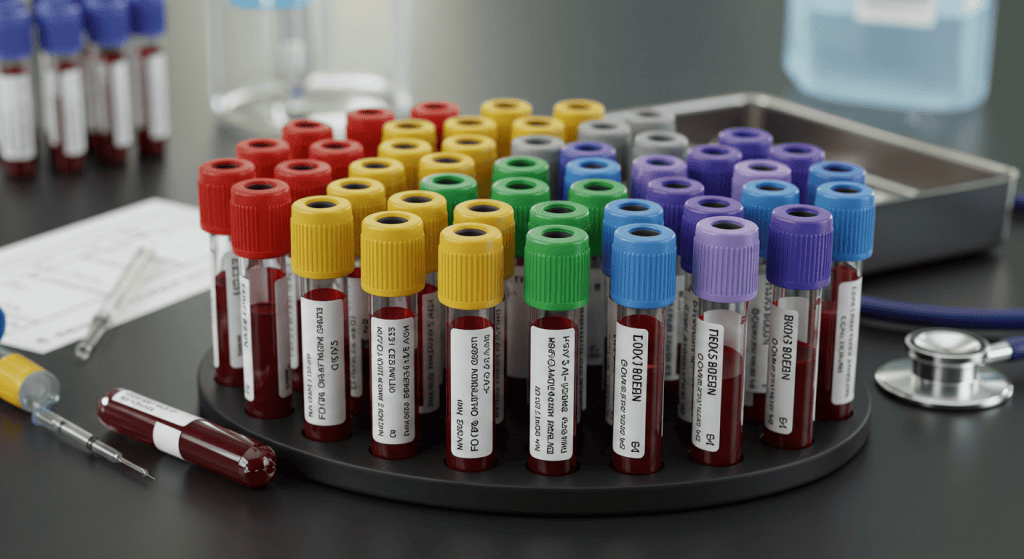When you visit a clinic for a blood test, you might notice a rainbow of tubes lined up, each with a different coloured cap. Ever wondered what these colours mean? They’re not just for show—each colour corresponds to a specific type of blood test, ensuring accuracy and reliability in your results. At Life Fit Wellness, we’re here to breakdown the process and highlight how our phlebotomy services, in partnership with Medichecks, can help you take control of your health.
Why Do Blood Tubes Come in Different Colours?
Blood collection tubes, or vacutainers, are colour-coded to indicate the type of additive they contain. These additives are crucial for preserving the integrity of your blood sample, ensuring it’s suitable for the specific tests being performed. Using the wrong tube could lead to inaccurate results, misdiagnosis, or even the need for a repeat test.
A Breakdown of Blood Tube Colours and Their Uses
Here’s a quick guide to the most common blood tube colours and the tests they’re used for:
What Do Blood Tube Colours Mean?
| Tube Colour | Additive | Common Tests |
|---|---|---|
| Red | None or clot activator | Routine chemistry tests |
| Gold | Clot activator + gel | Hormone tests, viral markers |
| Light Blue | Sodium citrate | Coagulation studies |
| Green | Heparin | Plasma-based tests |
| Lavender | EDTA | Complete blood count (CBC) |
| Gray | Sodium fluoride + oxalate | Glucose and lactate testing |
| Royal Blue | None or EDTA | Trace element testing |
Interactive Blood Collection Tube Guide
Click on any tube colour to learn more about its purpose and tests
Tube
Additive
Common Tests
Purpose
Special Considerations
How Life Fit Wellness Can Help
At Life Fit Wellness, we offer a seamless phlebotomy service as part of our integrated healthcare approach. Whether you’re monitoring your cholesterol, checking your hormone levels, or investigating a specific health concern, our team ensures your blood is collected correctly and efficiently.
Our partnership with Medichecks allows you to access a wide range of blood tests, from basic health checks to advanced diagnostics. And with code LIFEFIT10, you can enjoy 10% off your next test.
Tips for a Smooth Blood Test Experience
- Stay Hydrated: Drinking water before your test can make it easier to draw blood.
- Follow Fasting Instructions: Some tests require fasting - check with your healthcare provider.
- Relax: Our phlebotomists are trained to make the process as comfortable as possible.
Disclaimer: Always consult with a healthcare professional before undergoing any medical tests or procedures.











